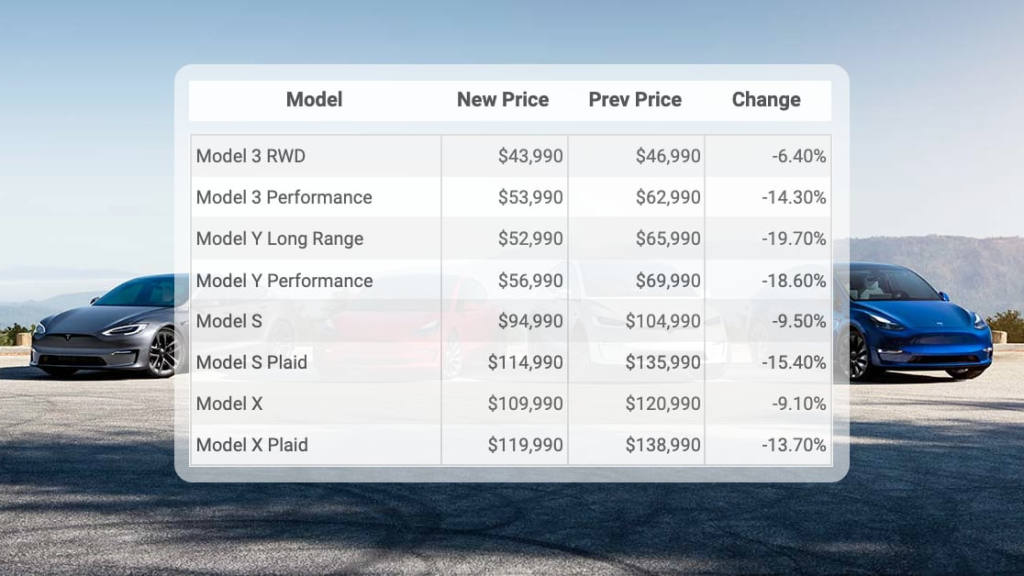Disclaimer: Any opinions expressed below belong solely to the author.
“Electric vehicles (EVs) are not accessible because of their prices!” “Who would buy EVs when other vehicles cost less?” We have all heard these arguments time and time again, to the point that we scarcely pause to consider the veracity of such sweeping statements.
Over the past few years, the discourse has generally painted EVs in the same way — good for the environment, but expensive and inconvenient to charge, and therefore not receiving sufficient adoption.
Indeed, there is good cause to believe that expensive EVs are a barrier to adoption. In the EU and China, EV adoption rates are high because of the government’s policy to prioritise both infrastructure and EV cost incentives.
Singapore has been doing the same, with legislation to mandate EV charging lots and cash rebates for EV registrations. EV adoption in Singapore, as a result, has been moving along at a decent pace. Sales of new EVs are on the rise, and more EVs are being registered.
The price gaps are also closing, with EV manufacturers like Tesla slashing prices and other manufacturers pivoting towards EV production and eating into Tesla’s market share.
In fact, there is a serious price war going on right now, with Tesla, Ford, Hyundai, and many others all slashing prices to gain market share.

For Singapore’s goal of having all vehicles in Singapore be EVs by 2040, this may be welcome news. Cheaper EVs mean more people can afford them, and consequently, many may choose to adopt EVs.
But will cheap EVs necessarily mean that Internal Combustion Engine Vehicles (ICEVs) will simply vanish from our roads, to be replaced by EVs?
Cheap EVs are good, but not good enough
While Singapore pushes itself towards EV adoption, there is the issue of controlling Singapore’s car population as well. The vision for Singapore, after all, is not just for a city of EVs, but a car-lite city of EVs.
As the EV market matures, a balance between these two objectives of moving towards greater EV adoption and keeping Singapore’s car population down needs to be found, and it can be far more difficult than it seems.
First off, we should recognise that EV adoption means that more EVs are being sold, implying an increase in the number of cars. But in a city like Singapore that aspires to also be a car-lite city, a high number of EVs being purchased will also run counter to the need to keep the car population down.
On one hand, lowering of EV prices to match or surpass the affordability of ICEVs provides a good reason for individuals to buy EVs.
But taking a step back, we see that the lower prices are a result of greater competition — in effect, an increase in the supply of EVs.
Meanwhile, the supply and demand factors within the ICEV market are not necessarily affected, and the number of ICEVs that are being registered may not necessarily have decreased.
What really matters, therefore, is not that EVs are being adopted, but that ICEV drivers are switching to EVs. While cheaper EVs mean more people can afford and buy EVs, whether it means that ICEV drivers trade in their ICEVs in favour of EVs is another.
Unless there is some reason for ICEV drivers to make the switch, ICEVs will continue to remain on the road, even as EV manufacturers lower prices.
One way to encourage EV adoption is to make them significantly cheaper. This may be true, but would such a success be complete?

People still do buy EVs despite their more expensive prices, and if the solution were really as simple as getting prices as low as possible, then why are EVs seeing greater adoption even when they are not the cheapest option on the market?
Ironically, the price and image of EVs may also need to change, and we may have to move away from just encouraging people to buy EVs simply through cash rebates and pointing out that EVs can be just as affordable as ICEVs.
The case for expensive EVs
Even as Certificate of Entitlement (COE) prices hit new peaks and Singaporeans complained, COE prices continued to rise as Singaporeans also continued to bid for the certificates in Category B.
Cars in this category are large vehicles, and more often than not, luxury vehicles.
If expensive cars were really as undesirable as we make them out to be, this phenomenon is nothing short of bewildering. Seeking some clarity, I asked one of my friends why he wouldn’t just buy a smaller car from another category that cost less.
And he replied, in a somewhat incredulous tone: “I run my own business- I’m driving around to meet clients all day. What would they think if they saw me driving a small car? What would my friends think if I downgraded from a luxury vehicle to an average car?”
Affordability, therefore, is not exactly the main concern for these Singaporeans. Instead, it was about luxury, bragging rights, and social standing.
Looking back, this proposition is not as strange as it would seem. Singaporeans used to talk about getting the ‘5Cs’ — a condo, country club membership, car, cash, and credit cards.
Eventually, this morphed into the ‘5Ms’ — getting a mansion, making millions, being part of Club Med, owning a Mercedes, and having Amex cards.
Evidently, luxury will always have its appeal, especially for Singaporeans. So why not for cars as well? Singaporeans will continue to chase after luxuries — no matter how much they cost, and cars are no exception.
While cheap EVs in large supply would encourage some to switch to EVs, it is not the only way to encourage EV adoption.
Price cuts have meant that brands like Tesla now run the risk of losing their luxury status. Tesla’s selling price was the statement that owning a Tesla would make, that you could afford a luxury car. With lower prices, however, Tesla’s reputation as a luxury brand is now not as strong and many are switching to other brands as a result.
If EV prices fall to match or undercut EV prices, it is not unfathomable that something similar may happen in Singapore. Owning an ICEV will suddenly become a luxury, and EV adoption may not be as complete as we hope.
Luxury, on the other hand, is not likely to lose its lustre as easily.
In economics, there is a concept known as Veblen Goods, which refers to luxury goods for which demand increases as the price increases. These goods are typically status symbols, which makes their high price a selling point rather than an obstacle.

Luxury cars, with the social status that they exude, can have a place in the local car market as well.
Luxury, status, and ego are one of the oldest reasons that people strive for social advancement, and this means that Singaporeans will almost certainly keep going after goods that are considered status symbols.
EVs are able to step into this space, as we have seen with Tesla and other brands. Right now, EVs are still more expensive and relatively uncommon. This is an important asset that will keep demand for EVs high, and an asset that should not be carelessly thrown away before its utility is fully taken advantage of first.
So we should keep EVs expensive? Not exactly.
Of course, keeping EVs expensive will mean that not everyone who buys cars will opt for them. Some simply need a car to get around, and an ICEV will do so just fine.
So keeping EVs at a high price point for everyone may not necessarily be the solution for Singapore as well.
After all, if people are unable to afford EVs, it also means that Singapore will not progress in its goal of having all vehicles be EVs by 2040.
We should also remain conscious that the luxury market is a limited space — only those who are financially better off will be able to worry about their social status and virtue-signalling behaviours like buying EVs because they are expensive.

Others will select more economical options, and ICEVs still command this space and are in the majority. Making EVs cheaper will indeed be a step towards displacing ICEVs and replacing them with EVs.
What the EV industry needs to provide, therefore, is not only luxury, expensive EVs, but also cheap, reliable and affordable EVs. Both markets exist side by side, and neither should be ignored.
Ensuring that there is an EV for each type of consumer will significantly strengthen the case for EVs. The ICEV industry will find that it no longer has any target audience that it can appeal to, and ICEVs will naturally be phased out as EVs are able to dominate both the normal and luxury car markets.
With EV prices on the decline, it is perhaps time to reimagine how EV adoption can be further accelerated. The statement that “EVs are more cost-effective than ICEVs” will only work for those uninterested in luxury cars — but this very same statement may find little traction among those interested in showing off a brand new car.
Instead, there is strength to be found in diversity — having a range of different EVs that each have their own unique selling points is something that the industry should strive to achieve.
The industry’s new narrative should no longer be one of cost, because it risks leaving out some important segment of the market. Instead, diversity of choice should be made the central tenet of the industry to ensure that ICEVs are rendered redundant.
The late poet and playwright Oscar Wilde argued that “As long as war is regarded as wicked, it will always have its fascination. When it is looked upon as vulgar, it will cease to be popular.”.
In the same vein, as long as ICEVs are seen as necessary to some segment of the market, there will always be some group that can argue for its continued use, but when it is looked upon as redundant and unrefined, then and only then will it be shunned and relegated to the dustbin of history.
Featured Image Credit: Reuters








